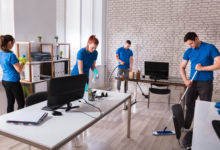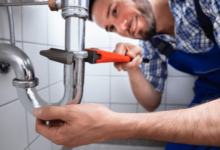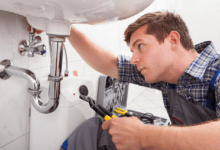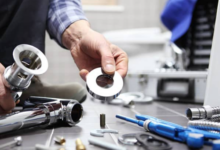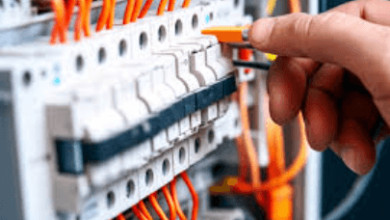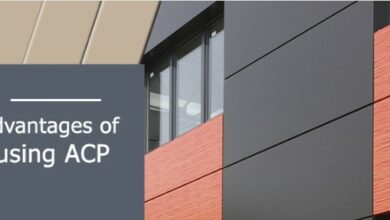Common Plumbing Issues and How to Prevent Them

Plumbing issues in Sacramento can cause significant disruptions and damage in a home, often leading to costly repairs and inconvenience. Understanding common plumbing problems and how to prevent them can help homeowners maintain a functional and efficient system. We will explore some of the most frequent plumbing issues and provide practical tips on how to avoid them. By taking preventive measures, you can protect your home from plumbing-related problems and ensure a smooth-running water system.
Most frequent plumbing issues
1. Leaky Faucets
One of the most prevalent plumbing problems in homes is a leaky tap. Over time, a dripping tap can waste water, increasing water bills and wasting resources. Worn-out washers, gaskets, or O-rings often cause leaks. To prevent leaky faucets, regularly check and replace these components as needed. Also, avoid turning the faucet handles too tightly, which can wear out the washers faster. Performing routine maintenance and addressing minor leaks promptly can prevent them from becoming more significant problems.
2. Clogged Drains
Clogged drains can occur in sinks, showers, and tubs, leading to slow drainage and, in severe cases, complete blockages. Common causes of clogs include hair, soap scum, grease, food particles, and foreign objects. Use drain covers to trap hair and other debris, and refrain from pouring oil or leftover food down the sink to prevent clogged drains. Regularly clean drains with baking soda and vinegar to break down buildup and keep pipes clear. Additionally, be mindful of what you flush down the toilet, as items like wipes, sanitary products, and cotton balls can cause significant blockages.
3. Running Toilets
A running toilet is annoying and can save a significant amount of water. This issue is often caused by a faulty flapper valve, It might not close tightly enough, letting water run constantly from the tank to the bowl. To prevent running toilets, regularly inspect and replace the flapper valve if it shows wear or damage. Additionally, check the fill valve and float to ensure they function correctly and adjust them as needed. These routine checks can help maintain your toilet’s efficiency and prevent water waste.
4. Low Water Pressure
Low water pressure can be frustrating and is often caused by various factors, such as sediment buildup in pipes, leaks, or issues with the municipal water supply. Clean showerheads and tap aerators frequently to get rid of mineral buildup that can impede water flow and cause low water pressure. If you have hard water, consider installing a water softener to reduce mineral buildup in your plumbing system. Additionally, check for leaks in pipes and fixtures and address them promptly to maintain optimal water pressure throughout your home.
5. Water Heater Issues
Water heater problems range from insufficient hot water to leaks and strange noises. Common causes include sediment buildup, faulty heating elements, or a malfunctioning thermostat. To prevent water heater issues, flush the tank annually to remove sediment and improve efficiency. Regularly inspect and replace the anode rod if corroded, as this component helps prevent tank corrosion. Additionally, set the thermostat to the manufacturer’s recommended temperature to avoid overheating and prolong the water heater’s lifespan. Routine maintenance and timely repairs ensure your water heater operates efficiently and reliably.
6. Burst Pipes
Burst pipes can cause significant water damage and are often the result of freezing temperatures, corrosion, or excessive water pressure. To prevent burst pipes, insulate exposed pipes, especially those in unheated areas like basements, attics, and garages. Allow faucets to drip slightly during cold weather to keep water moving and prevent freezing. Additionally, regularly inspect pipes for signs of corrosion or leaks and address any issues promptly. Installing a pressure regulator can help maintain safe water pressure levels and reduce the risk of pipe damage.
7. Sewer Line Backups
Sewer line backups can be serious, leading to unpleasant odors, slow drains, and potential health hazards. Common causes include tree root infiltration, pipe damage, and blockages from debris. Avoid planting trees or bushes close to your sewer lines to prevent clogs caused by the roots of the plants growing into the pipes. Get professional cleaning and inspection of your sewer lines on a regular basis to spot possible problems early on and take care of them before they get worse. To avoid blockages, be careful about what you pour down the drain and flush down the toilet.
8. Dripping Pipes
If left unaddressed, dripping pipes can cause water damage and lead to mold growth. This issue is often due to loose connections, worn-out seals, or pipe corrosion. To prevent dripping pipes, regularly inspect your plumbing system for signs of leaks or corrosion and tighten loose connections as needed. Replace worn-out seals and gaskets to maintain a watertight seal and prevent leaks. A water leak detection system, which can notify you of possible leaks before they cause serious harm, is another thing to think about installing.
Read also: Understanding the Different Features of Cavitation Slimming Machines
Conclusion
Preventing common plumbing issues requires regular maintenance, timely repairs, and proactive measures. It is possible to keep your home’s plumbing system dependable and effective by taking care of little issues before they become more serious. You may save time, money, and stress by learning the root causes of common plumbing problems and putting preventive measures into place. By following these guidelines, you can ensure your plumbing system operates smoothly and avoid the inconvenience of unexpected plumbing emergencies.

